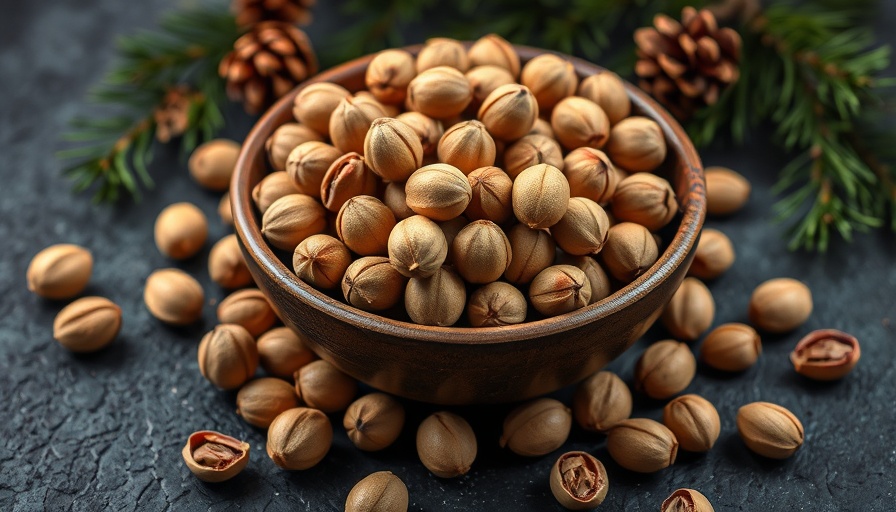
This Pine Nut Could Sabotage Your Taste Buds
Imagine indulging in a delicious meal featuring pesto, only to be left with a lingering metallic taste that transforms every bite into a bitter disappointment. This curious phenomenon, known scientifically as Pine Mouth Syndrome (PMS), is linked to certain varieties of pine nuts, particularly the Chinese white pine nut. As we dive deeper into the implications of this syndrome, we'll uncover the unsettling relationship between our favorite ingredients and their potential health risks.
In 'Friday Favorites: Pine Mouth Syndrome - Prolonged Bitter Taste from Certain Pine Nuts,' we dive into the mysterious Pine Mouth Syndrome and its implications, sparking important discussions on food safety.
Pine Mouth Syndrome: Not an Isolated Incident
Pine Mouth Syndrome, derived from its impactful symptoms, can emerge several days after consuming these troublesome nuts. The term cacogeusia—signifying an unpleasant taste in the mouth—captures the essence of this bizarre reaction. Reports have surged in recent years, notably in regions where the Chinese white pine nuts are more prevalent. While there's still much to learn about the exact compounds responsible for triggering PMS, such findings underscore the importance of being discerning about our food sources.
The Edible vs. the Inedible: A Nutty Dilemma
Out of over 100 pine species worldwide, only approximately 30 provide edible nuts. This disparity raises a critical question: how can consumers tell the good from the toxic? The situation becomes more complicated when you consider that many of those suffering from Pine Mouth Syndrome had no idea of the connection until after symptoms developed. Research conducted on individuals who unknowingly consumed the Chinese white pine nuts demonstrated a striking consistency; nearly all began experiencing symptoms shortly thereafter.
A Closer Look at Pine Nuts on Store Shelves
Are you aware of what nuts lurk in your pantry? Many commercially available pine nuts carry an ambiguous origin, often listed simply as “imported.” Unfortunately, this lack of transparency means that consumers might unknowingly purchase varieties that could induce Pine Mouth Syndrome. Understanding the origins of our ingredients is critical, especially considering that Europe took decisive action in 2011 to eliminate the import of nuts suspected of being toxic. Yet, the U.S. has lagged in comparable measures, leaving the door open for potential health hazards.
Pine Mouth Syndrome: An Understated Health Concern
Despite its bewildering symptoms, Pine Mouth is not considered a significant health threat. In fact, it typically resolves itself without any specialized treatment. However, the underlying message highlights a broader need for nutritional education and awareness of what we consume. While the science surrounding the adverse effects of unfamiliar foods is still maturing, one thing is clear: we must remain armed with accurate knowledge to navigate the complex world of dietary choices. The story of Pine Mouth Syndrome serves as a reminder to critically evaluate our food sources and their effects on our bodies.
What Can You Do to Protect Yourself?
As consumers, it’s essential to be proactive about our nutrition. Here are some actionable insights to consider when selecting pine nuts:
- **Research your options:** Familiarize yourself with different types of pine nuts, their origins, and which are safe for consumption.
- **Ask questions:** When dining out or shopping, don't hesitate to inquire where the nuts in your meals come from.
- **Stay informed:** Join community forums and groups that discuss dietary issues like Pine Mouth Syndrome to remain updated on recent findings.
Final Thoughts
Pine Mouth Syndrome might be a rare occurrence, but it accentuates an essential discussion about food safety and nutrition awareness. If you ever find yourself wondering why your favorite dish tastes unexpectedly bitter, remember this peculiar syndrome! While there’s no immediate cause for panic, educative advocacy for accessible nutrition and clearer labeling remains pivotal. As we advance our understanding of nutritional science, let’s also not forget to enjoy our culinary journeys—after all, knowledge is the best ingredient in creating a healthier lifestyle.
 Add Row
Add Row  Add
Add 







Write A Comment